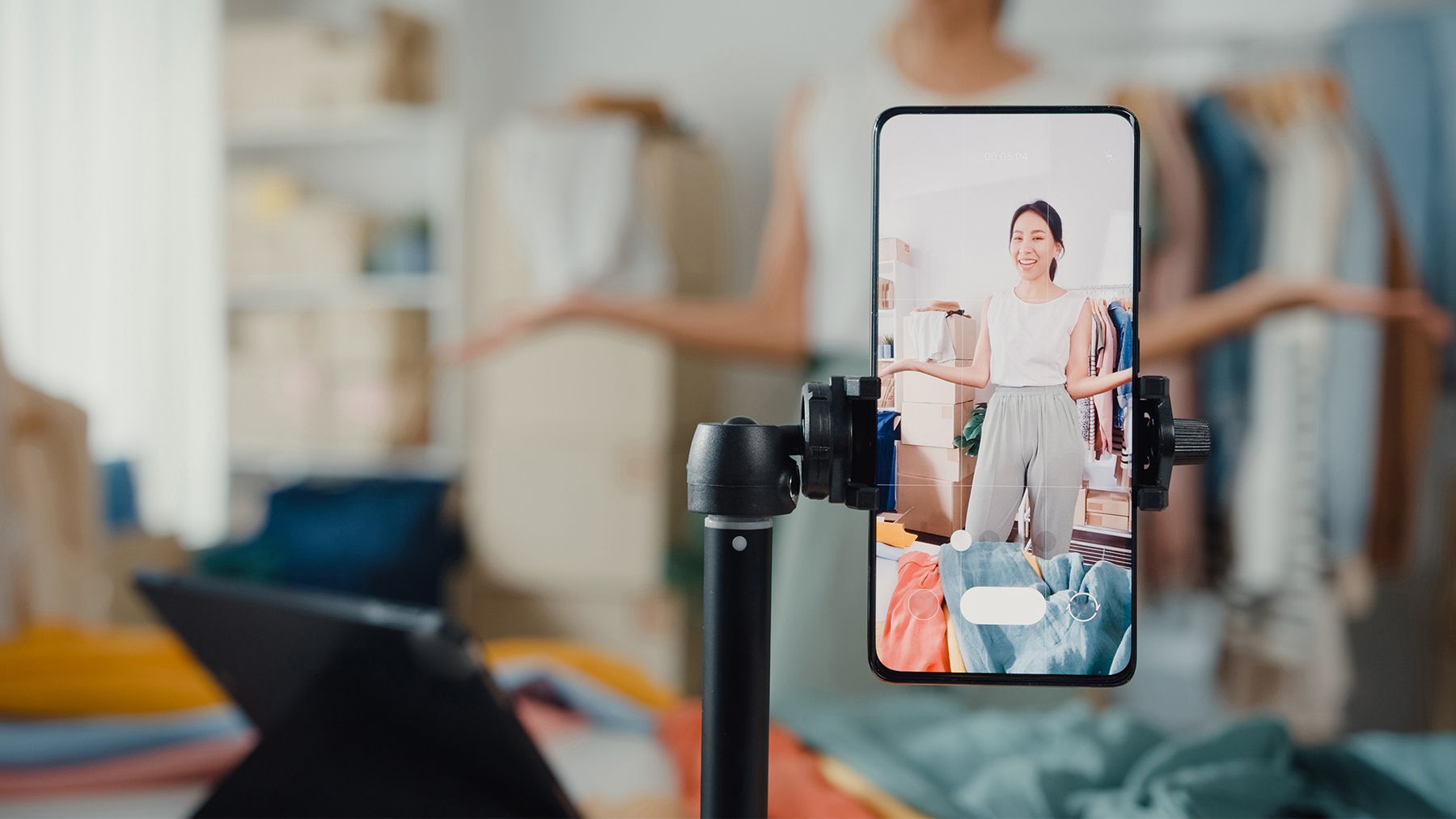
Chris Galasso and Michael Sard saw little risk in adding Instagram’s in-app checkout feature to Tombolo’s shop on the social platform’s app back in May. But they soon discovered there was also little return.
By August, only around 3 percent of the beachy dress shirt maker’s overall sales were coming from transactions placed directly on Instagram and Facebook. The design pair, who founded their brand in 2017, said they weren’t surprised: Instagram’s checkout feature helped get Tombolo’s posts in front of more users, but the transaction process itself seemed geared more toward quick, cheap purchases; customers needed more features to help them select from Tombolo’s assortment of playful $140 short-sleeve button-ups.
“If you go through the shopping experience on Instagram Shops, it’s really rudimentary,” Galasso said. “It could almost be an impulse purchase. It’s going to lead to smaller basket sizes.”
Tombolo’s founders aren’t the only ones underwhelmed by Instagram Checkout. Meta, Instagram and Facebook’s parent company, appears to be slowly dialling back its e-commerce ambitions. Meta is reportedly testing a new navigation bar in Instagram’s app that may include getting rid of the shopping tab, a feature that makes it easier for users to discover brands’ dedicated storefronts on Instagram. The Information first reported the news.
“Commerce remains important for Instagram as we continue to make it easier for people to discover and shop products throughout the app,” a Meta spokesperson told BoF in an emailed statement.
Instagram’s reversal is the latest setback for social commerce, the idea that consumers will shop in the same place they spend the bulk of their time online. Though popular in Asia, the concept has struggled to take off in the US, to the frustration of digital brands that must acquire customers on one platform and sell to them on another. In the absence of a so-called super app that combines product discovery and transactions, brands are using social commerce tools to drive up engagement on their posts in the hopes it will translate to higher traffic on their sites, where the bulk of their transactions still take place.
“The advertising strategy is much more important than the Instagram shop,” said Calla Murphy, vice president of digital strategy & integrated marketing at marketing agency Belardi Wong.
Owning the Customer Journey
Meta launched Facebook Shops in 2020 in the thick of the pandemic as online shopping became the de facto way to buy goods. With Shops, merchants of all sizes could create storefronts on Facebook and Instagram and display their wares to be sold directly on the platform or through an affiliate link that took customers to their website. That same year, it also introduced a shopping tab on Instagram in the app’s navigation bar, where users could browse by product categories and see recommended items based on posts they’ve previously liked.
Some brands have seen a bump in sales from using the commerce tools, but many say they aren’t sophisticated enough to replace the checkout experience on a website.
Ring Concierge launched their Instagram shop by linking the product catalogue from its Shopify-powered website to its new Instagram storefront. The following year, 6 percent of the company’s overall sales were coming from customers that landed on its site via the Instagram shop, said Nicole Wegman, Ring Concierge’s founder and chief executive. That share has bumped up to around 9 percent this year. The fine jewellery seller offers diamond tennis bracelets that can go for as much as $10,000 and customers spend around $1,000 on average per order.
Still, the company has opted not to let its customers complete transactions for its sparkly wares directly on Instagram. Since some of the brand’s items are custom made and have longer production times, Wegman said it is better for customers to place their orders on Ring Concierge’s website, where there are more detailed descriptions of the customization process.
“Because our product can be more complicated, we didn’t want to risk the customer experience falling short,” she said.
On Instagram, Ring Concierge’s storefront is limited to a set of product images in a narrow grid-like format. On its site, customers can see photos of models sporting the jewellery and styled in complementary outfits. (A Meta spokesperson said the grid format is one view of shops, but that brands can also merchandise product collections with a cover image.)
Outdoor apparel brand Halfdays’ incandescent red puffer coats and yellow ski suits also aren’t available for direct purchase on Instagram, two years after launching its Instagram shop. For Ariana Ferwerda, Halfdays’ co-founder and CEO, that decision to not allow transactions on her shop is about controlling customers’ journey from discovering her brand through a post or an ad to making a purchase on the company’s online store, where shoppers typically spend as much as $600 on average per order.
On Instagram, customers can’t see all of Halfdays’ product categories, see how items look in different colours or read detailed product reviews, Ferwerda said. (A Meta spokesperson said Instagram shops have a drop down called “Categories” for users to sort their product searches, and that Instagram shops also include product reviews from both purchases made on Instagram and from a businesses’ website.)
“I personally like to have ownership over the full shopping experience,” she said.
How much of a brand’s products users are able to see in an individual Instagram shop can also compromise the selling experience.
Sard of Tombolo said back in May he noticed that when people clicked on a product in the company’s Instagram shop, they would often see only a few number of Tombolo’s printed button ups in the recommended items section of the page, along with similar items from competitors that “are drafting off of our creativity,” Sard said.
“It takes a lot of the charm out of discovery,” he said.
Alternative Uses
Instagram shopping has proven to be a valuable tool for digital brands to increase awareness of their products. While it may not live up to the idea of an all in one e-commerce tool, it can be useful as part of a broader toolbox.
“The specific shopping tools [that Instagram provides] are one of many tools that have been offered up as a new approach and strategy,” said Jay B Sauceda, creative director at e-commerce software provider Cart.com, which creates online storefronts. “You can’t rest on the laurels of one tool.”
Ring Concierge is finding ways to increase engagement on its non-sponsored posts independent of Instagram’s shopping features. It held a flash sale on Instagram in December 2021 that was promoted through the brand’s IG stories. The items sold during the sale generated nearly $200,000 in a single afternoon, Wegman said.
After all, whatever the future of shopping on Instagram itself, 70 percent of Ring Concierge’s revenue comes from customers who click on non-sponsored posts on Instagram and place orders directly with the brand.
Other brands are testing the waters with commerce on TikTok, which is increasingly seen as an attractive platform for brands to experiment with less polished seeming storytelling. In August, Tombolo integrated its web store into TikTok for Business, a feature that enables users to click on a product featured in a post and buy it on a brand’s site. (TikTok has not been exempt from its own social commerce challenges. In July, the company was reportedly pulling back on previous plans to expand its live shopping feature called “TikTok Shop” in Europe and the US, the Financial Times first reported. TikTok said no such plans existed. TikTok declined to comment for this story.)
TikTok is “a nice way to speak in the Tombolo voice in a really unfiltered and authentic way,” Sard said.
“On Instagram, content is ‘just so’ and it is really curated,” he said. “That is a great benefit for conveying our product and our aesthetic, but we see TikTok as a valuable way to express Tombolo’s personality.”



